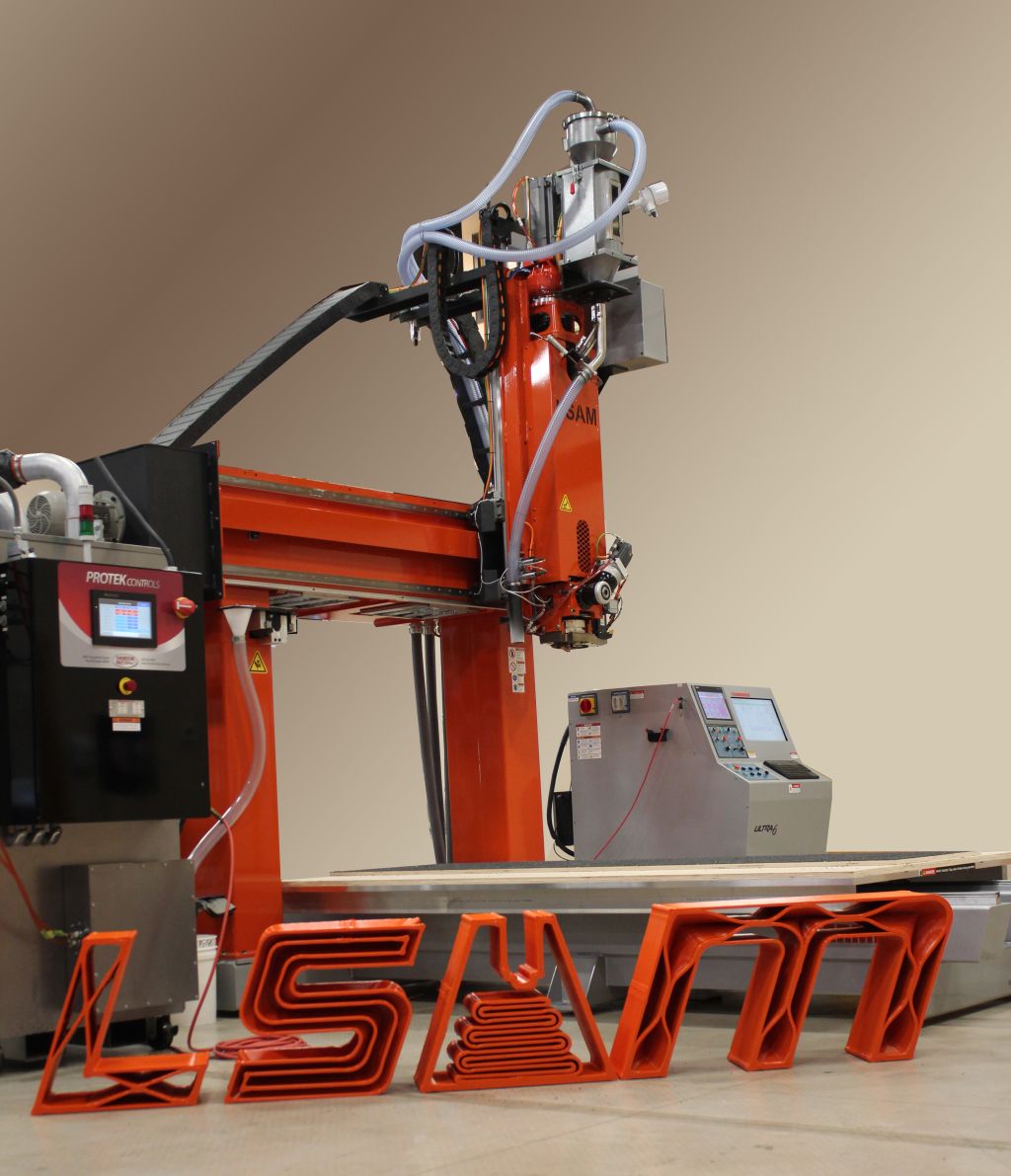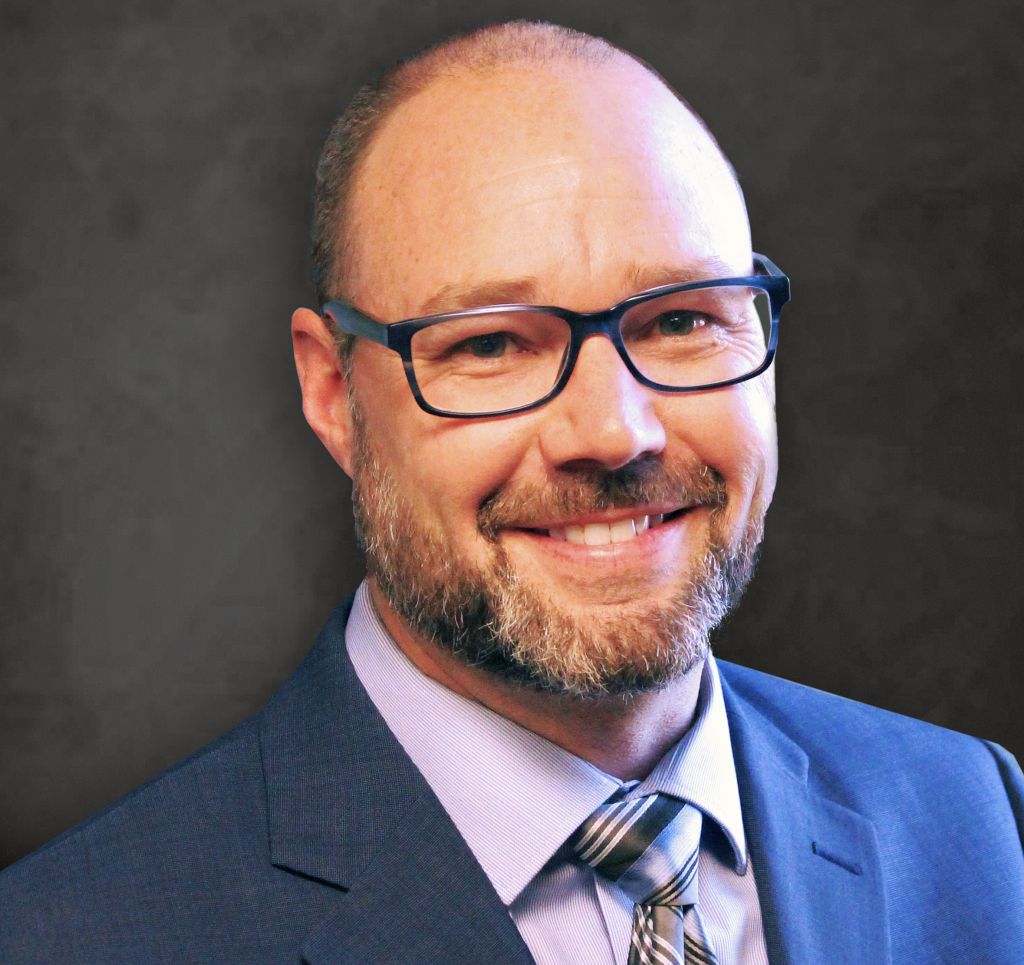Going large with print innovation

In this Q&A article, executive vice president, Jason Susnjara, from large scale additive manufacturing (LSAM) machine builder, Thermwood discusses with Ed Hill the latest developments in its technology.
Thermwood was established over fifty years ago in the US around an innovative approach to moulding wood-grained plastic parts for the furniture industry. The company developed a thermoforming moulding process that reduced part cycle time from around two minutes to less than five seconds using tools that cost 90% less.
New markets required complex trimming in addition to moulding so Thermwood began searching for an automated way to trim parts. The company realised that microprocessors, being introduced at the time, could be used to move a machine and trim. This resulted in the major development of a CNC control which was installed on its very first CNC router. The machine was successful in trimming moulded plastic parts, and Thermwood soon realised that there could be a market not only for its plastic parts, but also for the CNC router it had developed.
Since then, it has continued to develop and refine these technologies, and today the company builds some of the most capable machines and controls available. Since 2015, it has also gained recognition for its involvement in large-scale additive manufacturing (LSAM). It developed this unique 3D printing technology capable of producing large, high-quality thermoplastic components that is now utilised in industries, such as aerospace, automotive, foundry, marine, and others.

Thermwood fabricates most of the components for its machines and all electrical, mechanical and software engineering is done in-house as well as sales, service and support. The company is committed to innovation in the field of manufacturing, with a philosophy revolves around providing cutting-edge solutions for customers, helping them improve efficiency and productivity, and working closely with them to understand their unique requirements to provide tailored solutions.
Q) Firstly, tell me about your development of LSAM, the markets and applications for which it is primarily used?
LSAM has found applications in the aerospace, automotive, marine, foundry and general manufacturing industries, where the production of large components is critical. LSAM is used to produce large-scale tooling, moulds, fixtures, plugs and even end-use products for various industries. This technology allows for the rapid and cost-effective production of tooling used in manufacturing processes. Rapid prototyping of large components is also valuable for industries that require quick iterations and testing of designs before mass production.
Q) What would you say are the biggest trends and demands from your customers?
Our customers generally want to create a tool or mould quicker and cheaper than traditional methods. These methods traditionally require machining a block of aluminium, steel, foam, or wood down to the final shape and size. This usually requires removing most of the material to get the final result. LSAM can 3D print near-net shape, so there is far less removal or subtracting of material. With the standard LSAM configuration, we print from the bottom up. When we 3D printed a boat hull tool several years ago, we needed to print six separate pieces and then assembled them into one single piece. With our vertical layer printing (VLP) option, we are now able to rotate the same boat hull tool and print in one continuous piece, eliminating the need for assembly. In one example, we printed a specific tool the customer already had data for using traditional methods with the VLP method, saving them more than 40% in both time and money compared to the traditional process.
We also work with several material suppliers to help create and change material characteristics based on what the customer needs. Furthermore, Thermwood has implemented open platform communication (OPC) and MTConnect data for customers to use which offers a wide variety of information from the machine. Using MTConnect and OPC data provides more efficient operations, improved production optimisation, and increased productivity.
Q) What elements of your technology would you say differentiate you from your competitors and bring added benefits to users?
We have dozens of patents on both the hardware and software side of LSAM. Some of these technologies include our patented compression roller, melt pump and layer time control. All these technologies are some of the biggest benefits that LSAM utilises, and there are plenty of others. The compression roller is chilled allowing its use for high-temperature material. The compression roller has also been proven to provide a superior layer to layer bond and a void free print. It rotates automatically with the direction of the print simplifying the program. The melt pump helps control the amount of material that comes out of the nozzle, so there is no surging. With Layer Time Control, the control can automatically adjust the print speed to maintain a consistent layer print time as the print geometry changes, dramatically reducing the skill level needed to operate the machine. This is all handled automatically with our proprietary LSAM Print 3D software and CNC control.
Q) How do you work with customers new to LSAM and help them to optimise production and overcome any early hurdles?
We first learn what the customer’s objectives are and what they are going to use the LSAM for. Most require a demonstration tool to be 3D printed and machined during the sales process. All of that data is then given to the customer before the purchase so they can better understand the process, time, and material costs for a particular project.

With the machine purchase, the customer receives anywhere from 2–4 weeks of training depending on what options and software are purchased. On a print-only LSAM, the training will consist of two weeks. For the print/trim combination, four weeks. The customer will be shown how to slice and 3D print a particular object from start to finish. We also offer our Production Assistance service where we will send an expert technician to the customer’s facility to work with them side by side to help give the operator a better understanding and confidence with the system.
Q) What R&D projects are you involved in? Would you say there is more development in software improvements or hardware currently?
We have multiple R&D projects going on with LSAM, but a big one recently was a project involving the US Department of Energy, Purdue University, and others to design, print and machine tools for the wind energy industry. This project consisted of both hardware and software. Thermwood is always pushing the envelope on what LSAM can achieve and accomplish, especially when it comes to ease of use for the operator. Because we manufacture both the machine and CNC control, we can develop new methods and updates that our customers can benefit from very quickly compared to our competition. These ideas come from within the company as well as listening to what our current customers say about any given product.
We currently have at least 35 different material configurations available to all LSAM owners and are constantly researching and adding to this list.
Q) What are the latest LSAM improvements that you have introduced?
Some minor hardware improvements have occurred recently, but the majority are within the software and control side of the LSAM. Adding more functionality to the slicing software as well as making the control system easier to use so that the operator has to make less decisions based on a variety of factors.
Q) What impact do you think major trends such as sustainability and electrification of transport will have on your business?
The increasing focus on sustainability in manufacturing aligns well with the capabilities of additive manufacturing technologies. Additive manufacturing can contribute to sustainability by minimising material waste, energy consumption, and carbon footprint compared to traditional manufacturing methods. There may be opportunities for Thermwood and similar companies to position LSAM as an environmentally friendly manufacturing solution. The ability to produce large components with reduced waste and energy consumption is attractive to industries aiming for sustainable practices.
Companies like Thermwood can explore collaboration opportunities with leaders in the sustainability and electrification space. Collaborative efforts lead to the development of tailored solutions that address the specific needs of these industries.
Q) Is anything else you would like to mention?
When you purchase from Thermwood, you get a dependable machine, a superior control, reliable performance and the best service and support in the business.
Our experts work with customers during every step of the process to ensure that they receive the optimum machine configuration for a specific application, and to gain the knowledge and assistance needed to get into production as quickly as possible.
You are never on your own with a Thermwood system. Knowing that you have made the smart choice in partnering with a company that you can trust to stand behind you and do everything we can to make your business successful.
We are also constantly working to improve LSAM and LSAM Print 3D software. These improvements are then shared with all of our additive customers, so that everyone can have access to the latest developments and technology.









